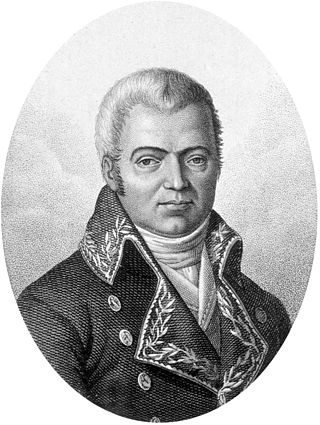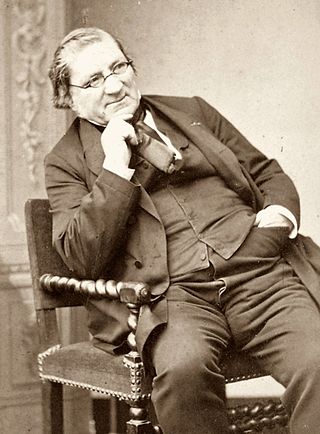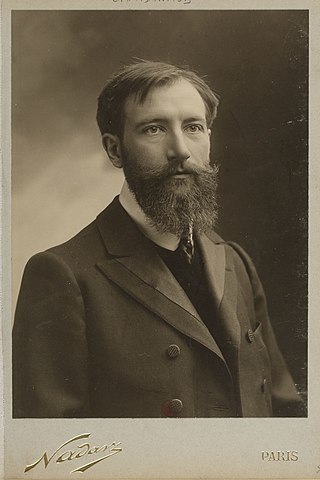Related Research Articles

Léon Louis Vaillant was a French zoologist. He is most famous for his work in the areas of herpetology, malacology, and ichthyology.

Pierre Marie Auguste Broussonet was a French naturalist who contributed primarily to botany. He was born in Montpellier, where he was educated, and travelled to Morocco, Spain, the Canary Islands, and Southern Africa before returning to France and serving as director of the botanical garden in Montpellier. The tree Broussonetia is named after him.

Marmande is a commune in the Lot-et-Garonne département in south-western France.

Paguristes cadenati, the red reef hermit crab or scarlet hermit crab, is a small species of hermit crab with a bright red body and yellow eyestalks that lives in the Caribbean Sea. The specific name honours the French ichthyologist Jean Cadenat (1908-1992), who collected the type specimen and sent it to the French carcinologist Jacques Forest, who described it as a new species.

The longfin sawtail catshark is a rare, little-known species of catshark, part of the family Scyliorhinidae. Once thought to be a subspecies of the roughtail catshark along with the Antilles catshark, it inhabits deep water off the Caribbean coasts of Panama and Colombia. This slim-bodied species has a marbled dorsal color pattern and a prominent crest of enlarged dermal denticles along the dorsal edge of its caudal fin. It can be distinguished from similar species by its relatively longer anal fin and small adult length of under 35 cm (14 in). The longfin sawtail catshark is oviparous.

The African sawtail catshark is a species of catshark, part of the family Scyliorhinidae. Demersal in nature, it is found at depths of 160–720 m (520–2,360 ft) off the western African coast from Morocco to South Africa. This slender species has a rather long, pointed snout, a series of dark saddles along the back and tail, and a prominent crest of enlarged dermal denticles along the upper edge of the caudal fin. Its maximum known length is 46 cm (18 in).
Entomacrodus cadenati is a species of fish in the family Blenniidae.

Claude Gay, often named Claudio Gay in Spanish texts,, was a French botanist, naturalist and illustrator. This explorer carried out some of the first investigations about Chilean flora, fauna, geology and geography. The Cordillera Claudio Gay in the Atacama Region of Chile is named after him. He founded the Chilean National Museum of Natural History, its first director was another Frenchman Jean-François Dauxion-Lavaysse. The standard author abbreviation Gay is used to indicate this person as the author when citing a botanical name.
Max Fernand Leon Poll was a Belgian ichthyologist who specialised in the Cichlidae. In the years 1946 and 1947 he organised an expedition to Lake Tanganyika.
Enteromius cadenati is a species of ray-finned fish in the genus Enteromius which is endemic to the Konkouré basin in Guinea.
Cepola pauciradiata, the Guinean bandfish, is a species of marine ray-finned fish belonging to the family Cepolidae, the bandfishes.. It is found on the Atlantic coast of Africa.
Henri Émile Sauvage was a French paleontologist, ichthyologist, and herpetologist. He was a leading expert on Mesozoic fish and reptiles.
Trachinus pellegrini, the Cape Verde weever, is a fish of the family Trachinidae. Widespread in the eastern Atlantic along the coasts of Senegal to Nigeria, including the Canary Islands and Cape Verde, and also reported from Mauritania, it is a marine tropical demersal fish, up to 20 centimetres (7.9 in) in length. The species was named and described by Jean Cadenat in 1937 and the specific name honours the French ichthyologist Jacques Pellegrin (1873–1944), who worked at the Muséum National d'Histoire Naturelle in Paris.

Diplodus is a genus of fish in the family Sparidae, found in the Atlantic and Indian Ocean.
Coloconger cadenati is an eel in the family Colocongridae. It was described by Robert H. Kanazawa in 1961. It is a marine, deep-water dwelling eel which is known from Senegal to the Gulf of Guinea in the eastern Atlantic Ocean. It is known from a depth range of 270–600 m. Males can reach a maximum total length of 90 cm. The diet of C. cadenati consists primarily of benthic crustaceans.
Dalophis boulengeri is an eel in the family Ophichthidae. It was described by Jacques Blache, Jean Cadenat and Alfred Stauch in 1970. It is a tropical, marine eel which is known from the eastern central and southeastern Atlantic Ocean, including Angola, Benin, the Democratic Republic of the Congo, Cameroon, Côte d'Ivoire, Equatorial Guinea, Guinea, Guinea-Bissau, Ghana, Gabon, Gambia, Liberia, Mauritania, Nigeria, Sierra Leone, Senegal, and Togo. It is active at night, and inhabits burrows during the daytime, leaving its head exposed. Males can reach a maximum total length of 57.4 centimetres, but more commonly reach a TL of 47.5 cm.

Paul Chabanaud was a French ichthyologist and herpetologist.
Merluccius polli, the Benguela hake, is a species of fish from the family Merlucciidae, the true hakes. It is found in the tropical waters of the eastern Atlantic Ocean off the west coast of Africa.
Opeatogenys cadenati is a species of clingfish from the family Gobiesocidae. It occurs in the eastern Atlantic and has been recorded off Ghana, Senegal and Morocco, as well as off the Canary Islands. This species was described by John C. Briggs in 1957 with a type locality of Chenal de Joal off Senegal. Briggs honoured the French ichthyologist Jean Cadenat (1908-1992) who was Director of the Marine Biological Section of the Institut Français d’Afrique Noire in Gorée, Senegal.
Marie-Louise Bauchot is a French ichthyologist and assistant manager of the National Museum of Natural History, France.
References
- 1 2 Jacques Daget (1993). "Jean Cadenat (1908-1992)". Cybium (in French). 17 (4): 263.
- 1 2 "Biographical Etymology of Marine Organism Names. C". Hans G. Hanson. Retrieved 17 August 2021.
- ↑ David Gibson (2014). "Cadenatella Dollfus, 1946". WoRMS. World Register of Marine Species . Retrieved 18 August 2021.
- ↑ "Search results for cadenati". The ETYFish Project Fish Name Etymology Database. Christopher Scharpf and Kenneth J. Lazara. Retrieved 18 August 2021.